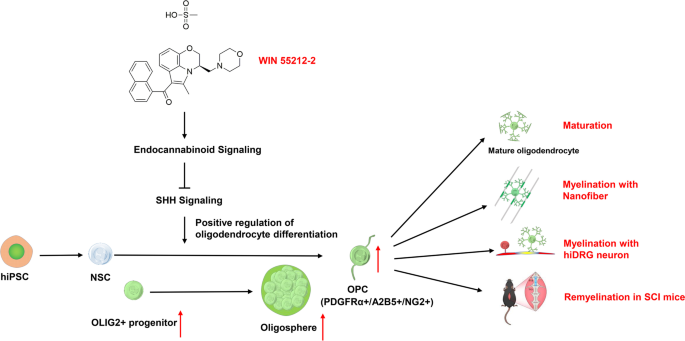
“Neuropathic pain (NP) arises as a direct consequence of traumatic spinal cord injury (SCI), which leads to devastating consequences for people suffering from this condition since no specific treatment has been defined. One relevant mechanism in generating painful stimuli involves the direct participation of reactive oxygen species (ROS) at the cellular and subcellular levels.
Cannabidiol (CBD) is one of the two most crucial cannabinoid components of the cannabis plant and has been proposed as a potential treatment for NP. Its antioxidant, neuroprotective and anti-inflammatory properties have been documented. However, there is insufficient evidence regarding CBD as treatment of NP induced by SCI or the mechanisms that underlie this effect.
In this study, we evaluated the antinociceptive effect of CBD as an acute treatment after the nociceptive behaviors characteristic of NP were established (hypersensitivity threshold and hypersensitivity response). Furthermore, the participation of oxidative stress was determined by lipid peroxidation (LP) and glutathione concentration (GSH) in female Wistar rats with SCI.
Acute treatment with CBD (2.5-20 mg/kg, i.p.) decreased nociceptive behaviors in a dose-dependent manner, decreased LP, and increased GSH concentration in injured tissue 15 days after injury. The findings of this study suggest that the antinociceptive effect induced by CBD is regulated by reducing oxidative stress by decreasing the LP and increasing the concentration of antioxidant (GSH) defenses.”
https://pubmed.ncbi.nlm.nih.gov/36028005/
“Cannabidiol decreases hyperalgesia in a dose–response manner after spinal cord injury.”
https://www.sciencedirect.com/science/article/abs/pii/S0304394022004165?via%3Dihub




 “Objectives: To evaluate the impact of cannabinoids on neurobehavioral outcomes in preclinical models of nontraumatic and traumatic spinal cord injury (SCI), with the aim of determining suitability for clinical trials involving SCI patients.
“Objectives: To evaluate the impact of cannabinoids on neurobehavioral outcomes in preclinical models of nontraumatic and traumatic spinal cord injury (SCI), with the aim of determining suitability for clinical trials involving SCI patients. “People with spinal cord injuries (SCI) commonly experience pain and spasticity, but limitations of current treatments have generated interest in
“People with spinal cord injuries (SCI) commonly experience pain and spasticity, but limitations of current treatments have generated interest in  “A cross-sectional multi-center study using an on-line survey addressing utilization, knowledge, and perceptions of medicinal
“A cross-sectional multi-center study using an on-line survey addressing utilization, knowledge, and perceptions of medicinal